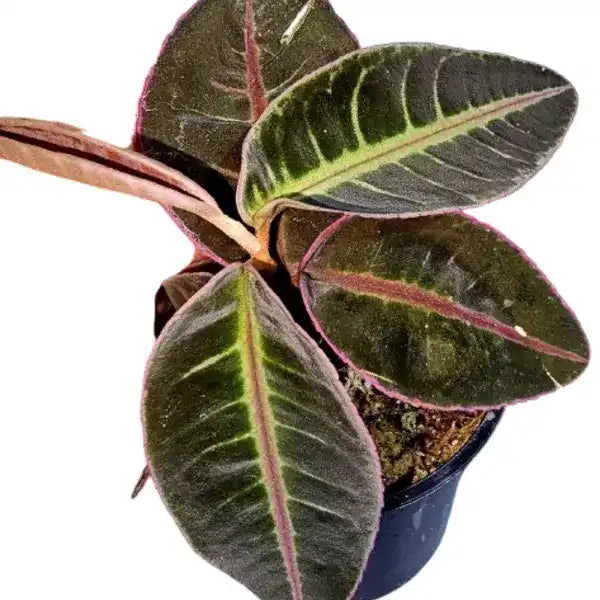
Labisia Emblemantha Urnulata Pink
Selling Size : Single Plant | Pot Included | Secure Packing | Free Shipping
Labisia emblemantha urnulata 'Pink' is a fascinating and highly sought-after aroid, also known by a variety of names including Ardisia sp. Sumatra, Labisia sp. Riau, or more recently, Emblemantha urnulata. It's prized for its intricate, textured leaves and vibrant pink or reddish new growth. This plant is a fantastic choice for a terrarium or any high-humidity environment.
Here's a care guide to help you cultivate this unique plant:
1. Light:
Moderate to low, indirect light is best.
As a plant that grows on the forest floor, it is not accustomed to direct sunlight.
Too much light can cause the leaves to lose their vibrant colors and may lead to scorching.
It can tolerate a range of light levels, but bright, indirect light will produce the most vibrant colors.
2. Humidity:
High humidity is essential. L. emblemantha urnulata thrives in humidity levels of 70% or higher.
This makes it an ideal candidate for a terrarium, vivarium, or a cloche.
If growing it in an open environment, you will need to use a humidifier to keep the air moist.
3. Watering:
Keep the soil consistently moist, but avoid letting it become soggy.
The roots are susceptible to rot if they sit in standing water.
A good practice is to water when the top layer of the substrate feels dry to the touch.
Ensure the pot or terrarium substrate has excellent drainage.
4. Soil/Substrate:
Use a well-draining, acidic substrate that also retains some moisture.
A mixture of sphagnum moss, perlite, and peat is a great choice.
The addition of orchid bark or coco coir can also improve aeration and drainage.
5. Temperature:
Maintain a warm, stable temperature, ideally between 68°F and 82°F (20∘C to 28∘C).
Protect the plant from cold drafts and sudden temperature drops, which can cause stress and lead to leaf drop.
6. Fertilizing:
This plant has low fertilization needs.
During the growing season (spring and summer), you can apply a very diluted, balanced liquid fertilizer at about 1/4 of the recommended strength once a month.
Over-fertilizing can harm the plant.
7. Other Tips:
Propagation can be done through stem or leaf cuttings.
The stunning coloration of the leaves can vary depending on the specific clone and the growing conditions. Young plants often have a different appearance than mature ones.
This plant is known for its beautiful "veinless" appearance on some clones, which enhances its unique foliage.

